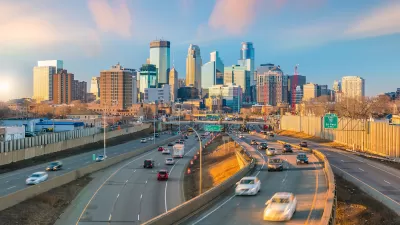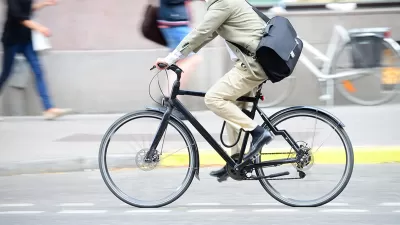A new study finds that the first decade of the 21st century exhibited a mass migration—of U.S. jobs moving farther away from where U.S. residents live.
"Between 2000 and 2012, the number of jobs within the typical commute distance for residents in a major metro area fell by 7 percent," according to a new Brookings Institution study. "Of the nation’s 96 largest metro areas, in only 29—many in the South and West, including McAllen, Texas, Bakersfield, Calif., Raleigh, N.C., and Baton Rouge, La.—did the number of jobs within a typical commute distance for the average resident increase. Each of these 29 metro areas also experienced net job gains between 2000 and 2012."
The report, by co-authors Elizabeth Kneebone and Natalie Holmes, defines "nearby jobs" as the number of jobs within a typical commute distance from the center point of that tract. "Typical commute distances" are based on the median commute distance in each metro area.
The study explains the numbers as a result of suburbanized employment—but even suburban residents were farther away from jobs as a result of the trend. "Suburban residents saw the number of jobs within a typical commute distance drop by 7 percent, more than twice the decline experienced by the typical city resident (3 percent)."
The post announcing the study on the Brookings website shares more of the study's key findings, including data about high-poverty and majority-minority neighborhoods.
FULL STORY: The growing distance between people and jobs in metropolitan America

Planetizen Federal Action Tracker
A weekly monitor of how Trump’s orders and actions are impacting planners and planning in America.

San Francisco's School District Spent $105M To Build Affordable Housing for Teachers — And That's Just the Beginning
SFUSD joins a growing list of school districts using their land holdings to address housing affordability challenges faced by their own employees.

The Tiny, Adorable $7,000 Car Turning Japan Onto EVs
The single seat Mibot charges from a regular plug as quickly as an iPad, and is about half the price of an average EV.

Trump Approves Futuristic Automated Texas-Mexico Cargo Corridor
The project could remove tens of thousands of commercial trucks from roadways.

Austin's First Single Stair Apartment Building is Officially Underway
Eliminating the requirement for two staircases in multi-story residential buildings lets developers use smaller lots and more flexible designs to create denser housing.

Atlanta Bus System Redesign Will Nearly Triple Access
MARTA's Next Gen Bus Network will retool over 100 bus routes, expand frequent service.
Urban Design for Planners 1: Software Tools
This six-course series explores essential urban design concepts using open source software and equips planners with the tools they need to participate fully in the urban design process.
Planning for Universal Design
Learn the tools for implementing Universal Design in planning regulations.
Smith Gee Studio
City of Charlotte
City of Camden Redevelopment Agency
City of Astoria
Transportation Research & Education Center (TREC) at Portland State University
US High Speed Rail Association
City of Camden Redevelopment Agency
Municipality of Princeton (NJ)





























